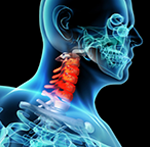In consideration of the new evidence and recent discussion concerning spinal immobilization, the National Registry of Emergency Medical Technicians (NREMT) has completed a review of the available published documents to date, including the resources listed below 1-7. The NREMT Standards & Examination Committee has discussed the impact of the recommended changes to our national EMS certification materials. This is not meant to be a clinical care document, rather to give guidance to testing candidates regarding NREMT’s interpretation of the literature on this topic. The NREMT will be implementing associated recommendations as of September 1, 2016.
Traumatic spinal cord injuries occur rarely. However, the associated morbidity and mortality from these injuries are high. Historically, concern for delayed paralysis and missed cervical spine fractures resulted in the widespread application of spinal immobilization practices for trauma patients in the out-of-hospital setting. Included in this practice is the use of long backboards, cervical collars, head blocks, straps and other devices for spinal immobilization.
Previously, the terms spinal immobilization and restriction have both been used to describe the act of preventing movement of the spine. Spinal motion restriction is defined as attempting to maintain the spine in anatomic alignment and minimizing gross movement irrespective of adjuncts or devices. NREMT’s use of the term, spinal immobilization is defined as the use of adjuncts (i.e cervical collar, long board, etc.) being applied to minimize movement of the spinal column.
The benefit of spinal immobilization in most trauma patients is unproven. A growing body of evidence has suggested the use of a long backboard can result in harm to patients including agitation, pain, increased radiography, pressure sores, tissue ischemia, aspiration and respiratory compromise. Additionally, data suggests spinal column movement may not decrease when compared to placing a patient on a gurney. Thus, the criteria for the application of spinal precautions though unproven but generally accepted and prudent, should continue to be updated to follow validated, evidence-based indications.
Patients for whom spinal motion restriction should be considered include those who have sustained blunt trauma through a high-energy mechanism and any of the following:
- Altered level of consciousness
- Drug or alcohol intoxication
- Inability to communicate
- Spinal column pain and/or tenderness
- Neurologic complaints (e.g., numbness or motor weakness)
- Anatomic deformity of the spine
- Distracting injury (injuries so severely painful that neck examination is unreliable, [e.g., severe thoracic trauma, long bone fractures, crush injuries, large burns])
In these individuals, a cervical collar should be applied. Long board use should be considered weighing the possible complications against the patient’s clinical situation.
Spinal motion restriction may be considered specifically for patients who meet criteria such as the NEXUS criteria 6 and Canadian C-spine Rule7, which have been validated for use in emergency departments to identify patients at low risk for spinal injury.
Further, concerning patients who have experienced penetrating trauma, spinal motion restriction using a long backboard should be used only if there are signs or symptoms of spinal injury.8 EMS personnel must specifically report when penetrating injuries are covered by application of a cervical collar or other adjuncts.
The criteria for application of spinal motion restriction will continue to evolve and develop as further research is completed to optimize patient safety. Further, these criteria may require modification for specialty situations (i.e. military, contact sports, racing, etc). EMS providers should carefully assess trauma patients for the potential of spinal injury and minimize spinal motion in at risk patients.
REFERENCES
- EMS spinal precautions and the use of the long backboard. Prehospital Emergency Care. July 2013;17(3):392-393.
- White C, Domeier R, Millin M. EMS spinal precautions and the use of the long backboard - resource document to the position statement of the National Association of EMS Physicians and the American College of Surgeons Committee on Trauma. Prehospital Emergency Care. April 2014;18(2):306-314.
- American College of Emergency Physicians. EMS Management of Patients with Potential Spinal Injury. ACEP Policy Statements. Available at: https://www.acep.org/clinical---practice-management/ems-management-of-patients-with-potential-spinal-injury/. Accessed July 27, 2016.
- National Association of State EMS Officials. National Model EMS Clinical Guidelines: Spinal Care. Available at: https://nasemso.org/Projects/ModelEMSClinicalGuidelines/documents/National-Model-EMS-Clinical-Guidelines-23Oct2014.pdf. Accessed July 27, 2016.
- Alson R, Copeland D. Long Backboard Use for Spinal Motion Restriction of the Trauma Patient. International Trauma Life Support. 2014
- Hoffman J, Mower W, Wolfson A, Todd K, Zucker M. Validity of a set of clinical criteria to rule out injury to the cervical spine in patients with blunt trauma. National Emergency X-Radiography Utilization Study Group. The New England Journal of Medicine. July 13, 2000;343(2):94-99.
- Stiell I, Wells G, Worthington J, et al. The Canadian C-spine rule for radiography in alert and stable trauma patients. JAMA. October 17, 2001;286(15):1841-1848.
- Lance E. Stuke, MD, MPH, Peter T. Pons, MD, Jeffrey S. Guy, MD, MSc, MMHC, Will P. Chapleau, RN, EMT-P, Frank K. Butler, MD, Capt MC USN (Ret), and Norman E. McSwain, MD. Prehospital Spine Immobilization for Penetrating Trauma—Review and Recommendations From the Prehospital Trauma Life Support Executive Committee. The Journal of Trauma Injury, Infection, and Critical Care, September 2011, 71(3), 763-770.


